Вы здесь
Tash-Rabat caravanserai.
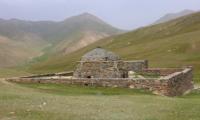
Tour to Tash-Rabat caravanserai.
“The distance of time’s separation brings us remnants of memories so ancient that most are lost in the mists of illusion…”
A.J. Vosse.
Trip from Naryn to Tash-Rabat.
Tash-Rabat building is located at an altitude of 3112 meters above sea level, located in the Tash-Rabat gorge on the left side of the river of the same name, 15 kilometers from the Naryn highway - Torugart pass, in the At-Bashinsky district of the Naryn region.
The building is half built into the hill. The main façade stands entirely on a hill, the side façades go diagonally into the slope of the gorge. Tash-Rabat is the only surviving building in Central Asia, laid out entirely of torn stone on clay mortar with seams sealed with ganch (alabaster mortar).
The main (eastern) facade of the monument is a wall flanked at the corners by minaret-shaped columns with an entrance treated like a portal, which is a monumental volume with 2 rectangular pylons and an arched niche in the center.
The Tash-Rabat building is one of the rare stone structures in Central Asia, located 58.1 kilometers southwest of the village of Atbashi, 9.5 kilometers north and slightly west of the Tash-Rabat pass located at an altitude of 3964.8 meters above sea level.
Tash-Rabat is a square building (32.4 x 32.4 meters), built of rock slate, facing the east with a monumental portal. Under the arch of the entrance, pushed forward by 2.9 meters, there are traces of wooden fastenings of the door, the facade is flanked by three-quarter decorative towers with a diameter of 2.8 meters.
A long sura 65 - 85 cm wide is arranged along the eastern front, and the platform in front of the entrance is paved with large slabs. The foundation and vaulted-dome ceilings of the building are built on alabaster, walls - 1.85 meters, internal 1 - 1.2 meters.
In terms of the building, two groups of premises are distinguished, divided by a central corridor (15.5 x 3.8 meters), 4.5 meters high. Narrow (20 cm) sufas are also arranged along the walls of the corridor. The central corridor unites all the premises of the first group, located immediately at the entrance: two adjacent guard rooms, two side corridors (11.6 x 2.8 and 2.6 meters) with sufas at the ends: ten square rooms (from 7.7 to 8.9 square meters).
The floor level in these rooms is 30 cm higher than in the corridor. The floors are covered with slate gravel (from 5 to 15 cm). The premises of the second group are organized around the central hall, the dimensions of which are 9.1 x 9.26 meters in plan (the disturbance was caused by the deformation of the masonry of the side walls).
The height of the walls of the hall is 5.05 - 5.2 meters - due to the slope of the floor level. On the axes of the hall there are three deep (up to 5 meters) vaulted niches, along the walls there are sufas up to 0.5 meters high and up to 0.5 meters wide.
In the center of the hall, a recess in the floor was preserved - a trace of the hearth (like embedded clay sandals, 50 cm in diameter and up to 7 cm deep). Doorways led from the hall on four sides to other rooms and to the roof through the northern gallery, with side corridors.
The rooms of Tash-Rabat were covered by 18 small domes (diameter from 1.5 to 3 meters), a large dome with a diameter of 9 m and 10 vaults, with a span of 2.3 to 3 meters, five of which were made using the "segments" method, and 5 - stone masonry, two rooms had a flat ceiling.
The interior space was illuminated through hatches in the ceilings. The size of the surviving holes in the vaults is 70 x 70 cm. The masonry of the vaults and domes is smeared with a 10 cm layer of clay and lined with small slate slabs, topped with waterproof ganch plaster up to 2 cm thick.
As is clear from the above plan, the building has a clear rhythmic structure inside, calculated on the sum of individual rooms that precede the larger rooms of the second part of the building. The rhythm of the internal plan of the structure is consistent with the simple lines of the silhouette of the building as a whole.
The portal type entrance, located in the center of the front wall, repeats the idea of the Central Asian portal-pishtak. A corridor connects the entrance with a large room, covered with a cone-shaped dome, also cut off through an arch along the top, but of a smaller size.
Thus, the arch of the portal, the entrance to the plucked wall and the entrance to the “kram” are entrances rhythmically decreasing in height. The corridor connecting the entrances is covered with a vault, formed first by slabs pushed inward, starting about a meter from the current floor level, and then, at a height of about 3 m, passing into the vault itself.
The dome above the "temple" rests on the tier of the gromps. supporting the dome of the annular masonry. The rhythm is preserved in the interior, each subsequent room is twice as large as the previous one. This rhythm, like the rhythm of the entrance arches, is repeated three times, that is, the area of the temple is six times the area of the cells.
The rhythm of the square corresponds to the rhythm of the volume of the cells and the temple. All cells have light holes in the center of the domes, as well as in the dome of the “temple”. One cannot help but see some imitation of the yurt with its illumination through the tunduk (the tunduk is a light hole, and a smoke hole in the central upper part of the yurt; this hole can be covered with a felt mat).
The central dome of Tash-Rabat repeats the design of the ceilings of small rooms. Looking at the roof of Tash-Rabat, one cannot get rid of the impression that this is some kind of petrified camp of nomads with a large rich yurt in the center (A.N. Bernshtam, 1950).
The dome in ancient times ended, apparently with a light lantern. In addition, to illuminate the hall in the dome, there are windows oriented to the cardinal points and located at the level of the completion of the octahedron.
In total, there are 31 rooms in the building (including the niches of the central hall). All these data indicate a strong influence of the tastes of nomads on the architecture of the building, which is quite convincingly explained by the place where this building is located and the time when it was erected.
Tash-Rabat was explored in the XIXth - early XXth centuries by Ch. Valikhanov, A. M. Fetisov, L. N. Zeland, A. Voitsekhovich, K. A. Larionov, N. N. Pantusov. In Soviet times, the construction was examined by B. M. Zima, A. N. Bernshtam, V. K. Zmievsky, G. A. Sutyagin, M. G. Polishchuk, V. E. Nusov.
Based on literary and graphic sources, the works of V. V. Bartold, B. N. Zasypkin, G. A. Pugachenkova were written. In 1978 - 1980, fundamental studies of the monument were carried out by B. V. Pomaskin, S. Ya. Peregudova, S. S. Merkulova, E. V. Frolov.
The functions of Tash-Rabat have not been precisely established. Presumably, this structure was intended for short stays of armed detachments that served to connect Kashgar with Balasagun, and then with Uzgen.
Geographical coordinates of Tash-Rabat caravanserai: N40°49'23 E75°17'19
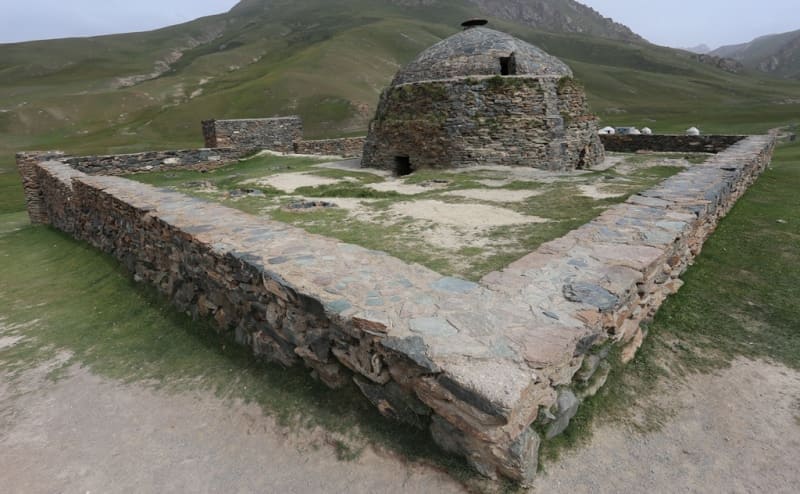
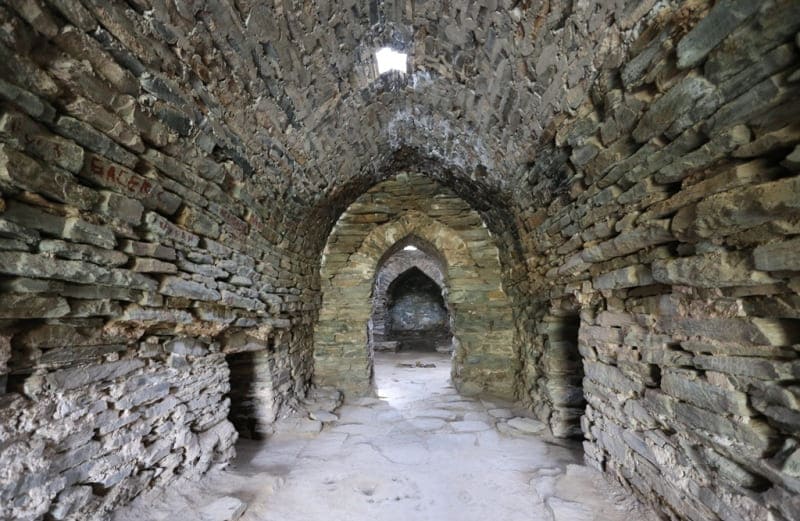
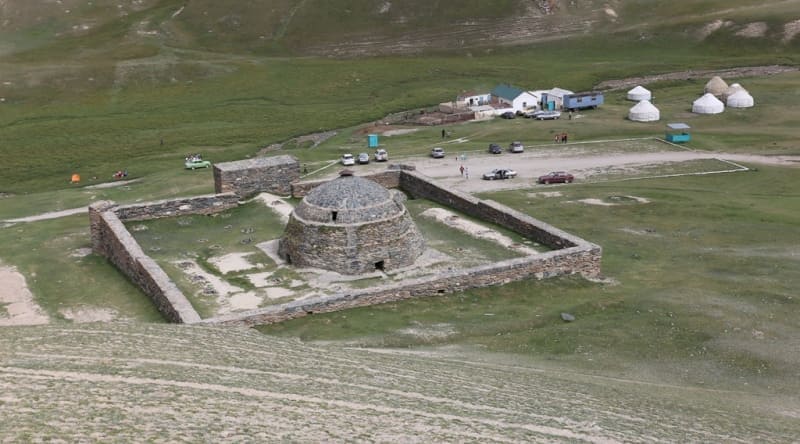
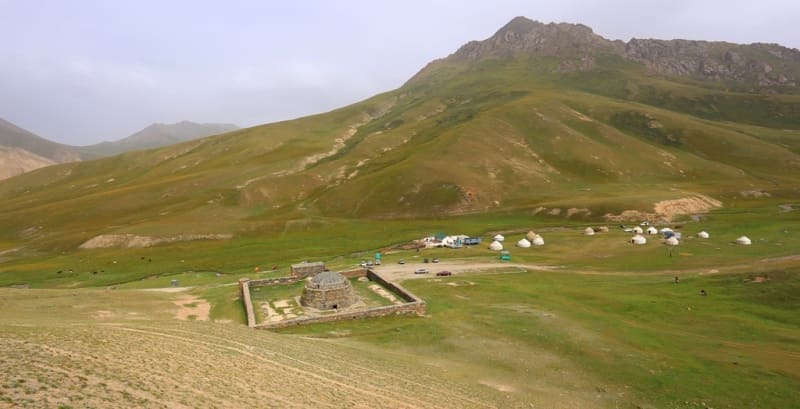
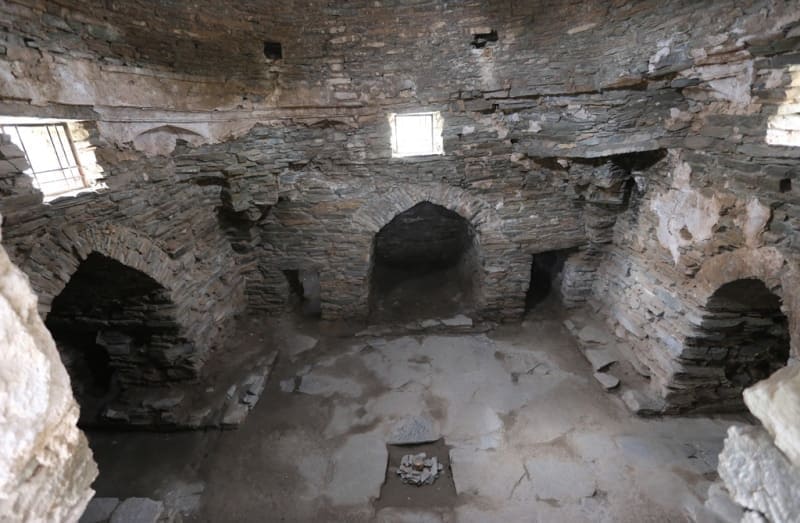
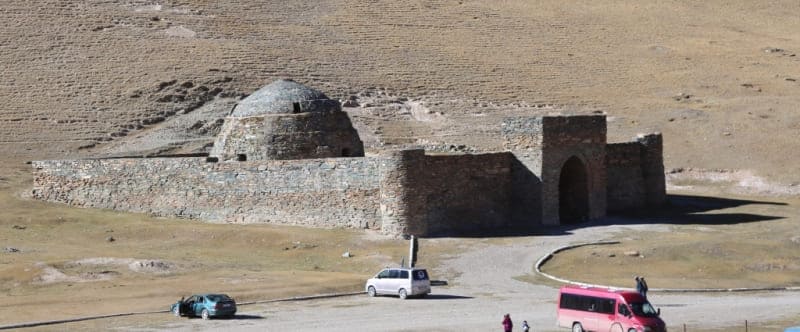
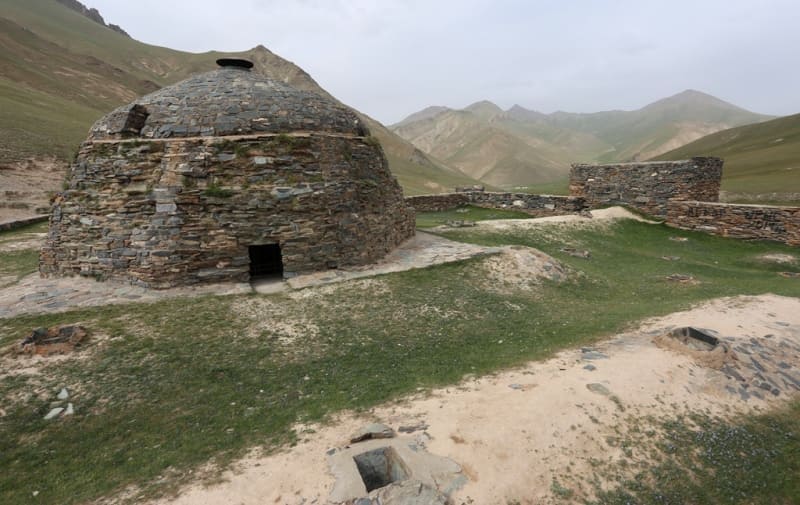
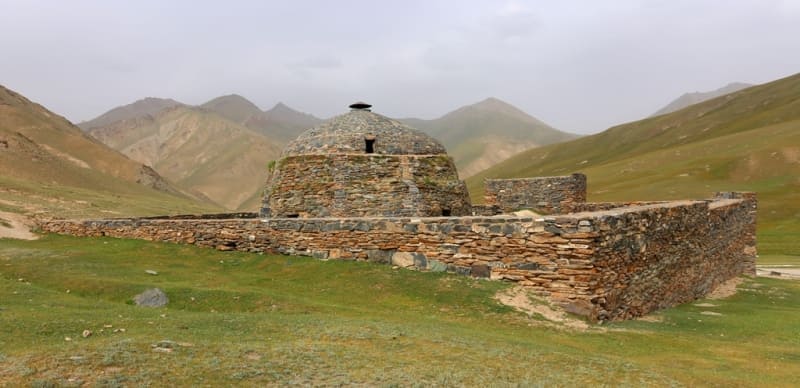
Authority:
Goryacheva V.D. "Cult and Memorial Monuments".
Photos by
Alexander Petrov.







